Introduction
If you’re looking to capitalise on the compelling benefits of hiring a freelance website designer for your business’s digital presence, you’re in the right place. However, getting the best out of a freelancer requires effective communication and sharing some key pieces of information. Here’s a comprehensive guide to help you prepare for this rewarding journey.
Clarify Your Objectives
To maximise the potential of a freelance web designer, it’s crucial to have a clear vision of your project. What do you hope to achieve with your new website? Who is your target audience? What kind of user experience are you aiming for? These details will help your freelancer align their designs with your business goals and the needs of your prospective users.
Provide Branding Elements
Your website should reflect your brand identity. Therefore, provide your freelancer with all branding elements, such as logos, brand colours, fonts, and any other visual elements that define your brand. If you have a brand style guide, that would be incredibly beneficial.
Share Website Content
Content is a key part of your website. Whether it’s written copy, images, videos, or other multimedia elements, be prepared to share all the relevant content with your designer. This not only helps with the layout and design but also ensures your site will be designed with SEO in mind.
Examples and Inspiration
To help your freelance designer understand your vision, provide examples of other websites you admire for their design, layout, functionality, or user experience. It’s also a good idea to note what specifically you like about these sites, whether it’s the colour scheme, typography, the arrangement of content, or interactive elements.

Functionality and Features
If your website requires specific functionality or features (such as contact forms, booking systems, e-commerce capabilities, etc.), communicate this to your designer at the outset. This will allow them to plan and implement these elements efficiently.
Project Timeline
Be clear about your project timeline, including any specific deadlines. Remember, your freelancer is juggling multiple projects and needs to plan their schedule accordingly. The more precise you are, the better they can accommodate your project and deliver on time.
Budget
Every project has a budget, and your freelancer needs to know yours. This will help them determine the scope of the project, the features and functionalities that can be incorporated, and how much time they can dedicate to your project.
Conclusion
Building a new website for your business can be a daunting task, but a freelance web designer can take your vision and make it a reality. However, achieving the best possible outcome requires careful preparation on your part. By providing clear objectives, sharing branding elements and website content, offering inspiration, detailing required functionalities, defining your project timeline, and setting a clear budget, you’ll equip your freelancer with everything they need to deliver a website that encapsulates your brand and objectives perfectly. Happy planning!
